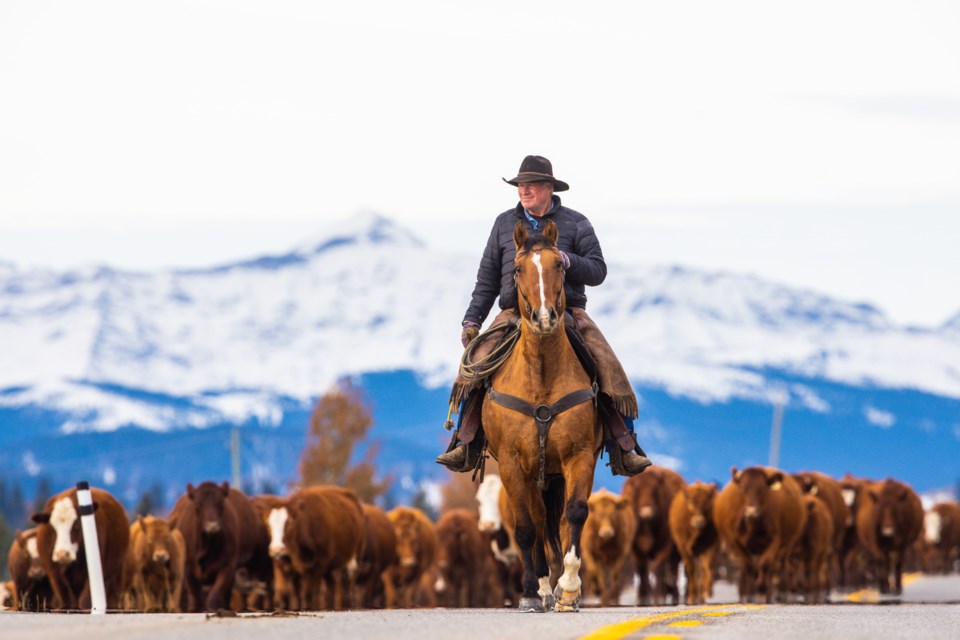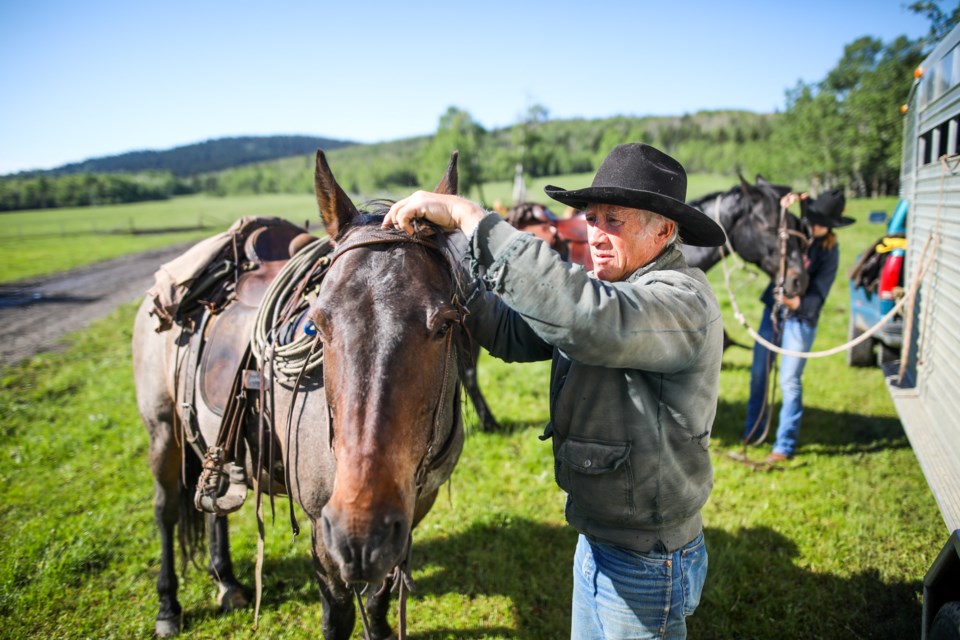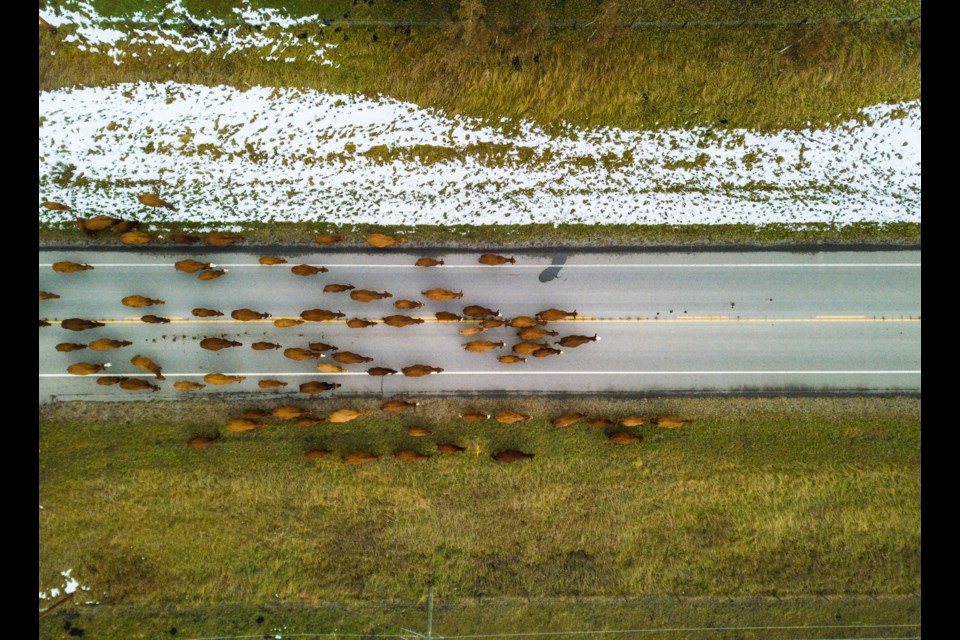Driving cattle on horseback into forests at the base of the Canadian Rockies isn’t just history, but a fact of life for modern ranchers.
John Thomson of XL Ranch has been driving the family herd since he could ride a horse.
Each spring, Thomson, aided by friends and family, drives the cattle on horseback, heading out west of Turner Valley on Highway 546 through Bluerock Wildland and Sheep River Provincial Parks to their grazing lease, along with typically five other herds.
There they graze for four months before being rounded up and driven back in the middle of October.
During the roundup, Thomson and his team stay at a camp in the forestry lease for a week.
Now 70, Thomson grew up the third generation of ranchers, and is often aided by his sons Chad and Tyler, as well as Chad’s wife Candace and 10-year-old son Hayes.
His son Chad enjoys working cattle and helping out on the drive as well.
“It’s just a different lifestyle. It’s a great lifestyle to live,” said Chad, who works in construction, but enjoys getting back to help on the ranch.
“You kind of get bored of that, so I love coming back to the cows and doing cow work too.”
Driving the herd on horseback is a matter of practicality, as opposed to transporting them in cattle liner trucks.
“It comes down to tradition,” Chad said. “Our family’s been doing it for three or four generations.
“We find it’s better for the cows. They get a little exercise going up there and coming back.
John’s brother Gary, who also drives a smaller herd each year, said the cattle have a memory when they travel by foot.
“If we walk them up there, they know where home is,” Gary said. “And they know how to walk back.”
Once in the hills, the cattle have approximately 100 square miles to roam. Gary said the job isn’t over once they get there — the cowboys will routinely check back on them, and sometimes drive them further into the hills.
The forestry grazing lease from Alberta Sustainable Resource Development, is paid per cow, but has economic and productive benefits back home.
“It's very important to us, because we don't have the land down here to support all our cows,” Chad said.
With the cattle out of a rancher’s hair, their own lands can be more productive.
“The productive ground down here can be farmed and hayed and get more production off it if the cows aren't grazing it off,” John said.
“The land up there is very large and they cover all kinds of ground that can’t be farmed,” John added. “It can't be utilized for pretty much anything other than pasture, because it's either too rough, too rocky, or too boggy, too hilly.
“It's just not conducive to scratch the ground.”
He pointed out that Alberta Forestry welcomes the grass being grazed down in the hills as it reduces fire risk.
The conditions can often be unforgiving rounding up on the lease.
Early October snowfall can linger, causing trouble for man and cow alike.
“Quite often, it'll warm right up, the snow melts off, the cows go back to grazing,” John said.
“But last year, it was deep, it was not nice.
“There were areas back there where it was three-feet deep.
“There were about three days in tough conditions before it warmed up and the cows got back to where they could find grass and actually graze again.”
John said wolves are becoming an increasing threat to the herds with populations growing in the areas west of the foothills.
An annual issue that’s only been exacerbated by COVID is traffic, increased in the last year by more people driving out to hike the provincial parks.
While the cattle are out to pasture on their grazing lease, they’re free to roam and may find themselves on roadways face-to-face with cars.
John said he lost two calves to being struck by vehicles this past year, while Gary lost four.
The cost can range well into the thousands for each animal.
The ranchers attribute it to drivers’ speed.
“They’re in such a rush,” Gary said. “They don’t just hit the cows, they hit all kinds of animals, deer and moose and everything.
“People just don’t realize that there’s animals in this world.”
During the drive, the traffic can also become an issue as cars back up behind the herd.
“Cows move along at about three miles per hour,” John said.
The seasoned rancher’s advice to motorists who encounter a cattle drive was simply to use care and caution, but that it is possible to get through.
“Just take it slow and stay off your horn. Ease through them and look for the open spots."







